Security Blanket
a sound installation for sitting still
April 30, 2024
Chip Davis Technology Studio, E. V. Moore Building
University of Michigan
A visitor approaches the empty installation, sits on the cushion, and interacts with the ball / ritual object
Excerpts from two of the sound worlds in the installation
About
-
Security Blanket offers a space to sit still and sink into soothing sounds.
When a visitor sits on the blanket and holds the ritual object still with both hands, a collage of elemental sounds and deep synths emerges, wrapping up the visitor in sound. These soothing sounds are drawn from a crowdsourced Facebook list of suggestions and include rain and distant thunder, birds, a crackling fire, bubble bath popping, wind in trees, low-frequency rumbles, a pencil writing on paper, and a dishwasher.
-
The piece includes three sound worlds created with field recordings and digital synths. A pinging sound world fills the air when no visitor is engaged with the installation. When a visitor sits on the cushion, the pinging soundscape transforms into a simple wash of bass synth. When they pick up the ritual object by each of two copper touchpoints, they hear distinct clangs, and once they’ve sat holding the ritual object still for 5-7 seconds, a 7:30 composition of soothing sounds emerges.
-
Blankets, velvet pillows, plushes (as soft as possible), two large PA speakers, a meditation cushion (with pressure sensor), a hollow blue steel gazing ball with stand (from a garden store, with capacitive touch sensors and IMU), an Arduino Uno R4 Wifi, a laptop running Max/MSP.
-
BMI160 IMU (gyroscope readings only)
MPR121 Capacitive Touch Breakout Board (plus copper tape)
The code includes controls for dimmable 12V LED lights, but lighting was instead provided inside the Davis Studio.
Process

This project started in 2019, when I made a blanket from t-shirts I collected while living in Detroit. I wanted to make the blanket into a sound installation where interactions with the blanket would play soothing sounds. I would call it a security blanket.

I crowdsourced a list of >300 soothing sounds from Facebook. The pandemic rolled in, and I set aside the project.
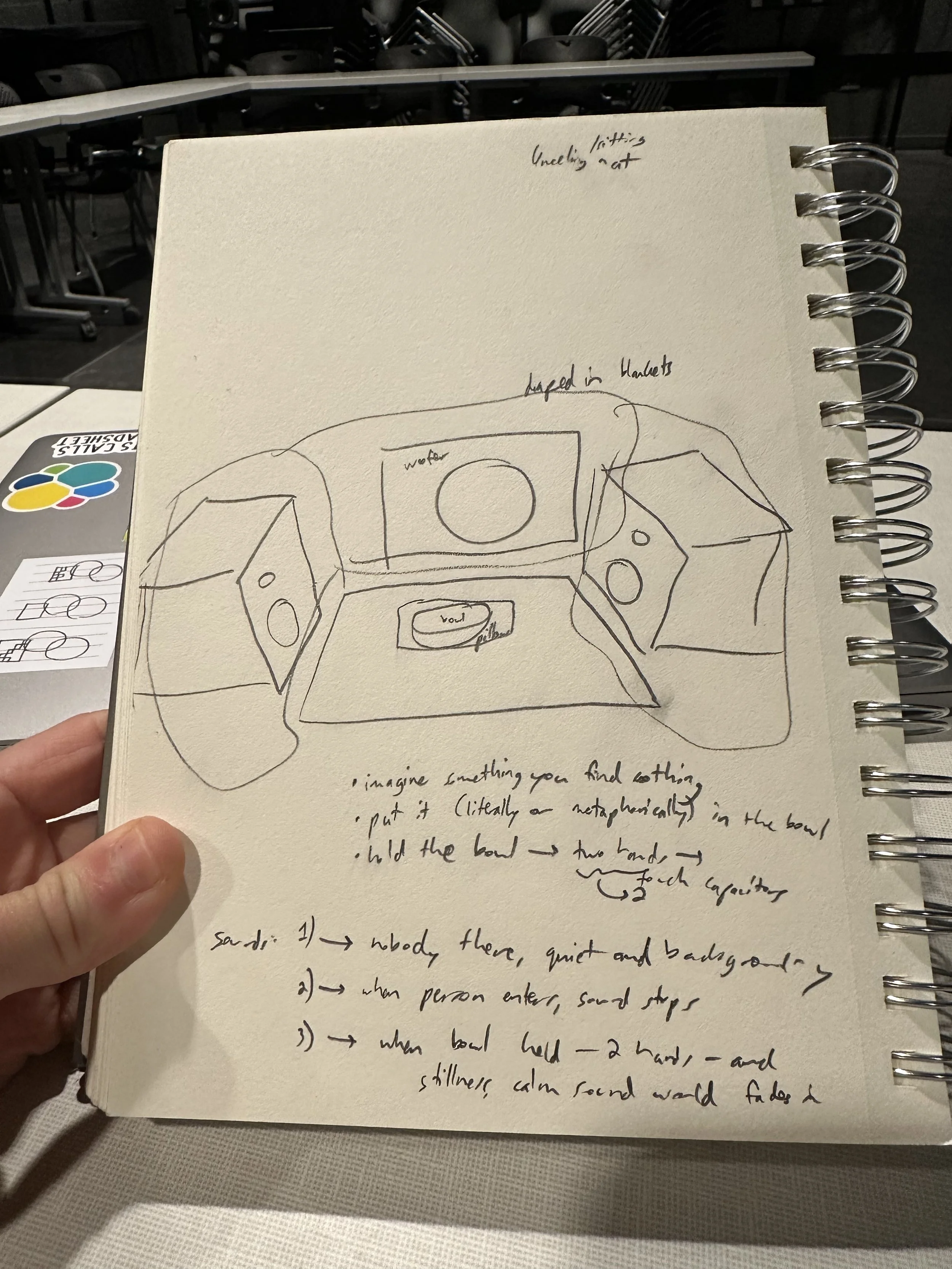
As I revisited the idea in 2024, I considered what would make a soothing sonic interaction. Instead of a blanket, it would be a space.

I thought about the kind of interactions a person could have with a blanket: folding, touching, moving. I didn't land on anything that felt relaxing and natural. Instead, I decided the blanket would be part of the setting and would visually cue relaxation, but the interaction would be with a TBD ritual object inside the space. The sound would also be metaphorically blanketing.

I thought about interactions that would reinforce the ideas of calm and stillness. I wanted to have a sound world happening when nobody was in the space, I wanted to detect when a person entered the space, and I wanted to have a compelling collage of soothing sounds emerge once the person was settled and still in the space.

I thought about making a blanket or pillow fort. I tried it. I realized a blanket fort could be an awesome sound installation, but I'd want to spend all my time tossing and moving the pillows around rather than listening to soothing sounds. I set that idea aside.
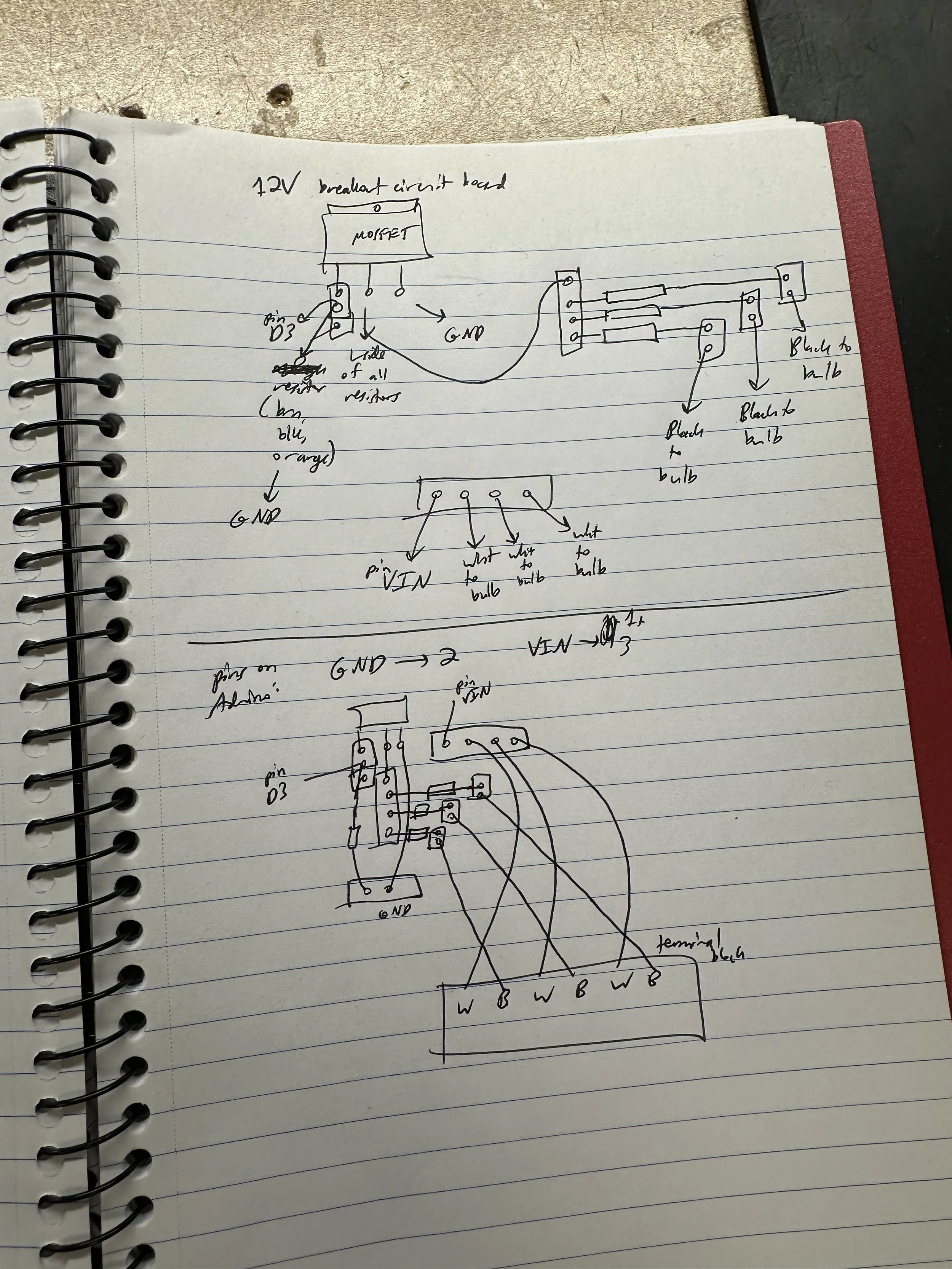
Eventually, I settled on having four sensors in the space: a pressure sensor on a cushion (to detect when a person enters and sits), two touch capacitive pads on the ritual object (to ensure the person holds the object undistractedly with two hands), and an IMU (to detect stillness of the ritual object).

For pressure sensing, I used an FSR. I acquired an extra meditation cushion.

I was undecided about what to use for the ritual object, and then I was randomly given a hollow, shiny steel ball. For touch sensing, I took raw data from a capacitive touch breakout board attached to two squares of copper tape insulated from the ball with rubber pads. It turns out attaching the breakout board to a large conductive ball will mess with the default readings, so I had to calculate which sensor was being touched from the raw data.
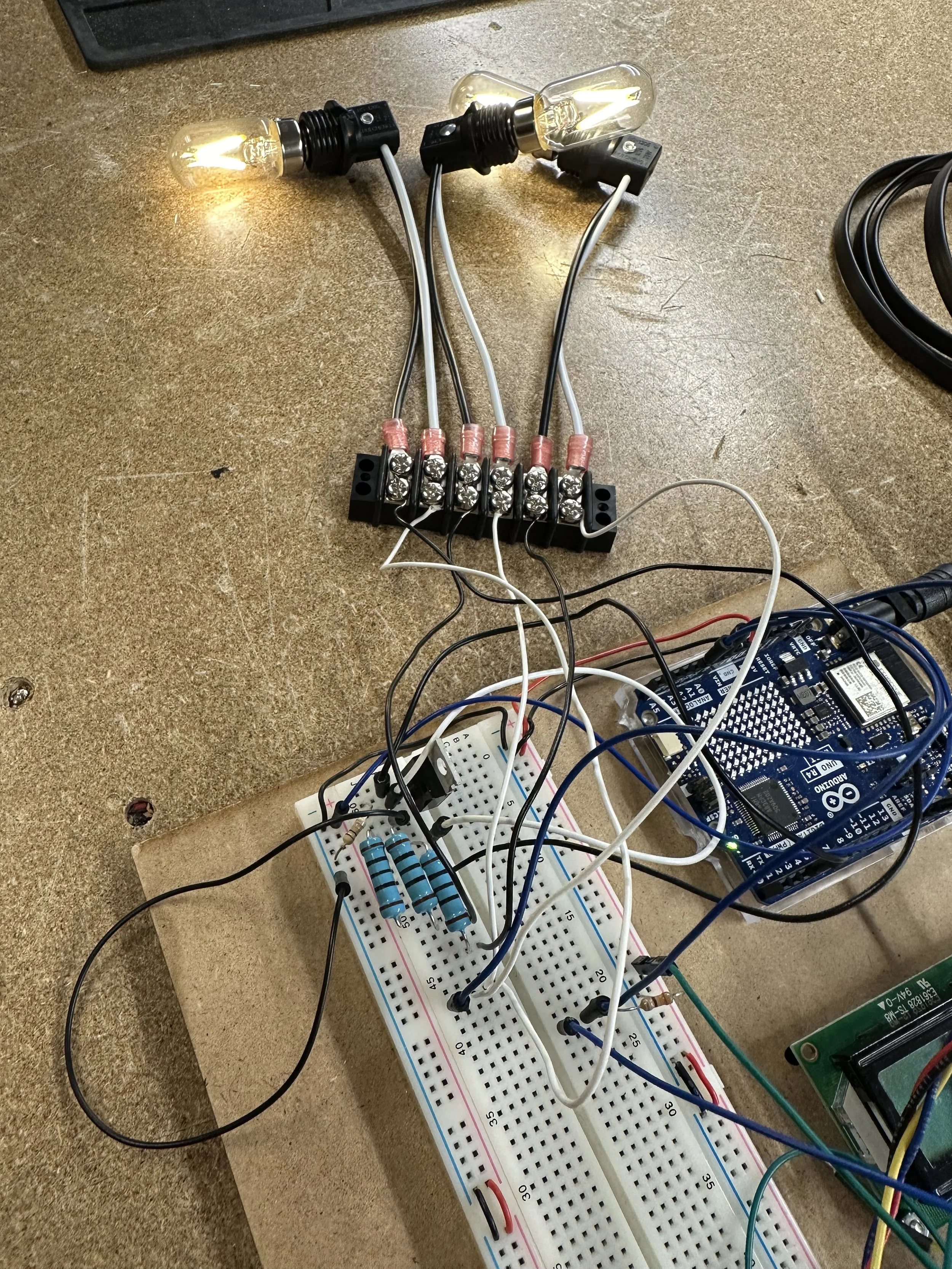
I decided to build a structure around the space and incorporate 12V DC LED lighting into the interaction. The lights would grow warm and bright as the visitor grew still. I discovered that plugging a 12V power supply into the Arduino would cause the serial connection to randomly fail every 30-180 seconds, and after some troubleshooting (and deciding not to build an enclosing structure), I gave up on the LED component of the installation.
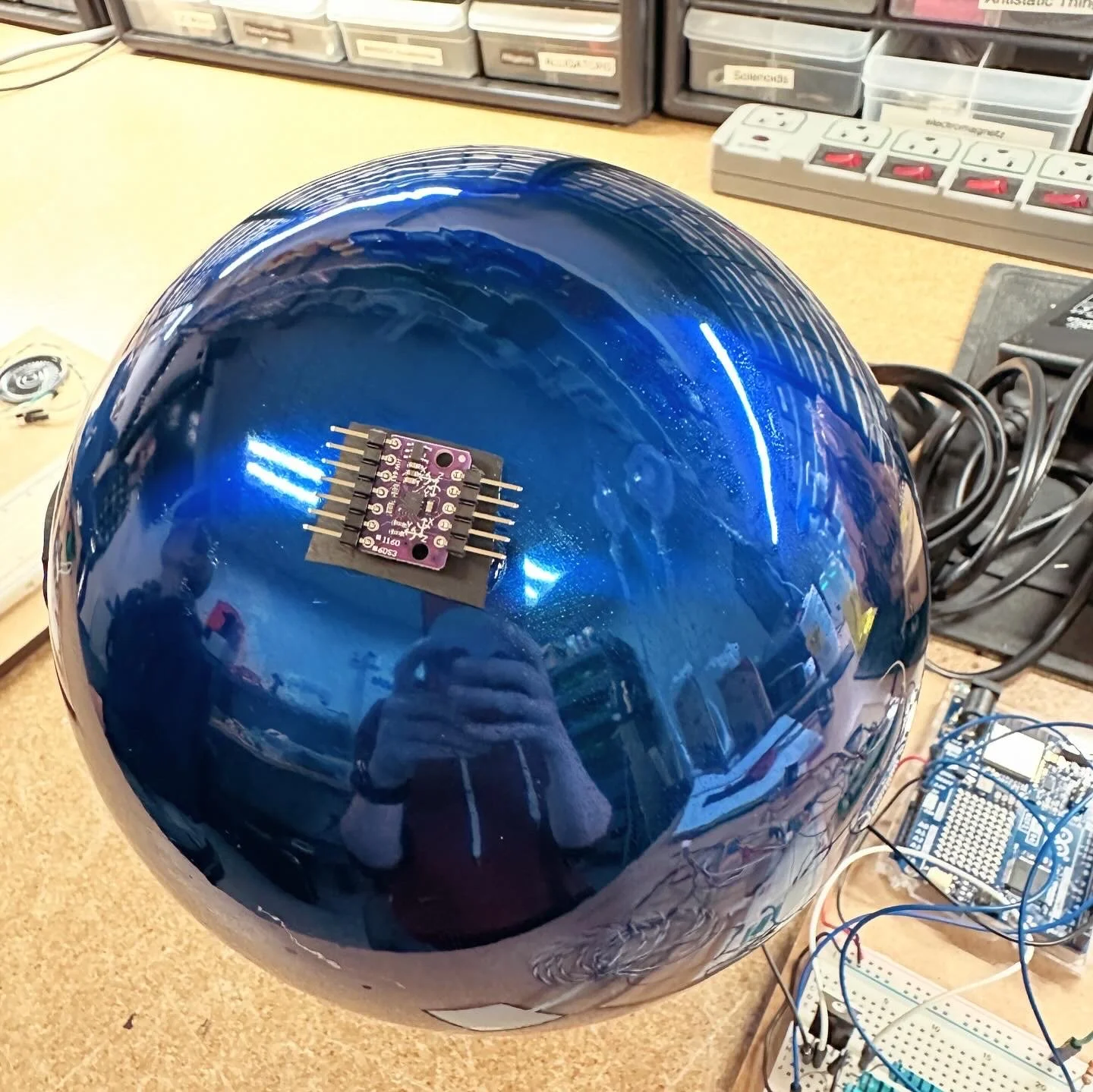
To measure stillness, I attached an IMU to the steel ball and took in just the gyroscope data, which reverts back to a stable equilibrium when the object isn't moving.

Eventually, all my sensors were wired up and sending data serially to Max.

I created a Max patch to play the sound worlds and set thresholds on the sensors to ensure the correct level of sensitivity to pressure, touch, and stillness.
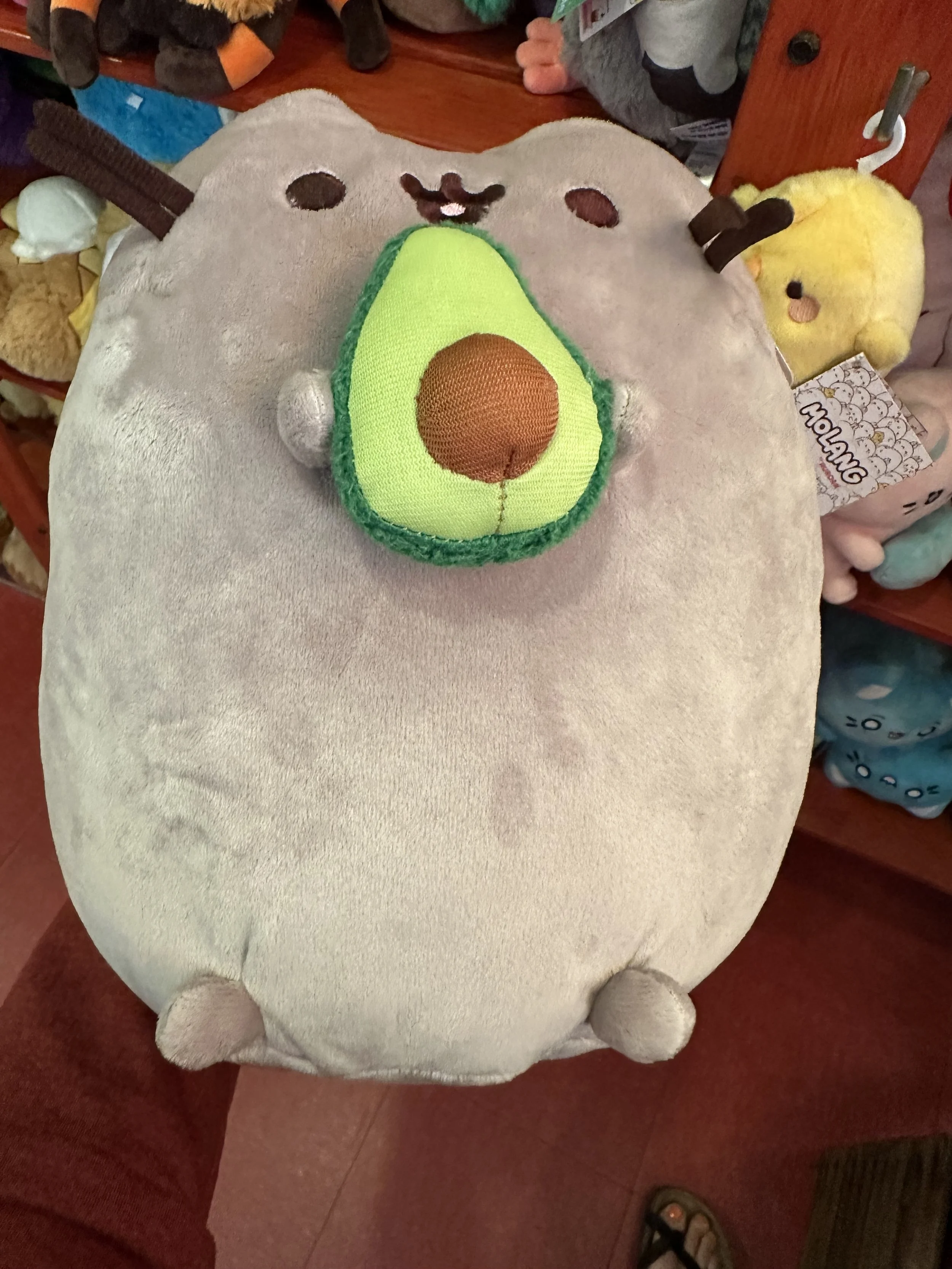
I gathered additional blankets, pillows, and soft things to make the space feel cozy.
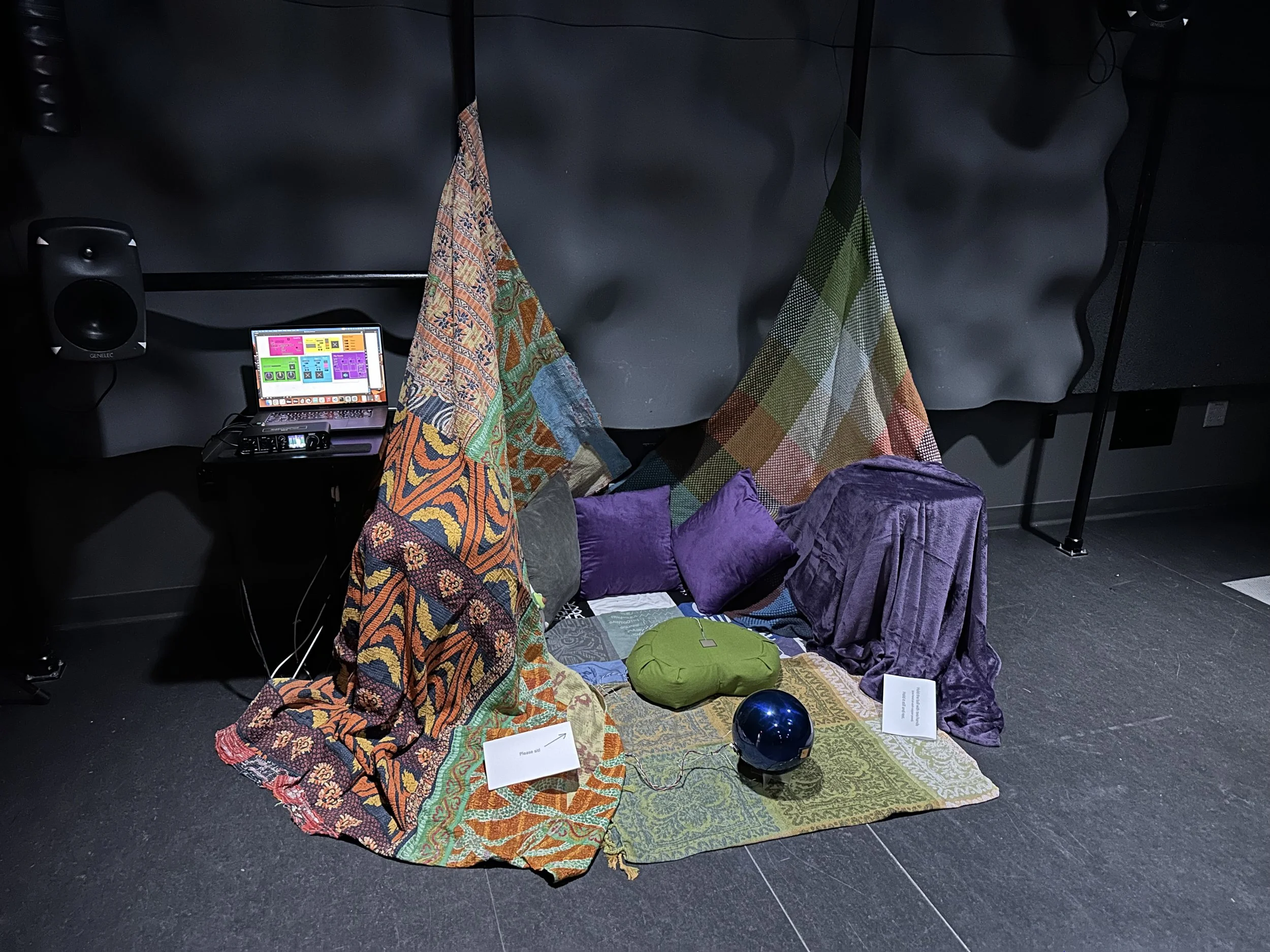
To install, I set up stereo PA speakers on the floor on either side of the cushion, pointed inward. I used the original Detroit blanket as the floor of the space, and I draped the space with many additional blankets and pillows. I set the thresholds for pressure, touch, and stillness.

I printed simple instructions on two pieces of paper.
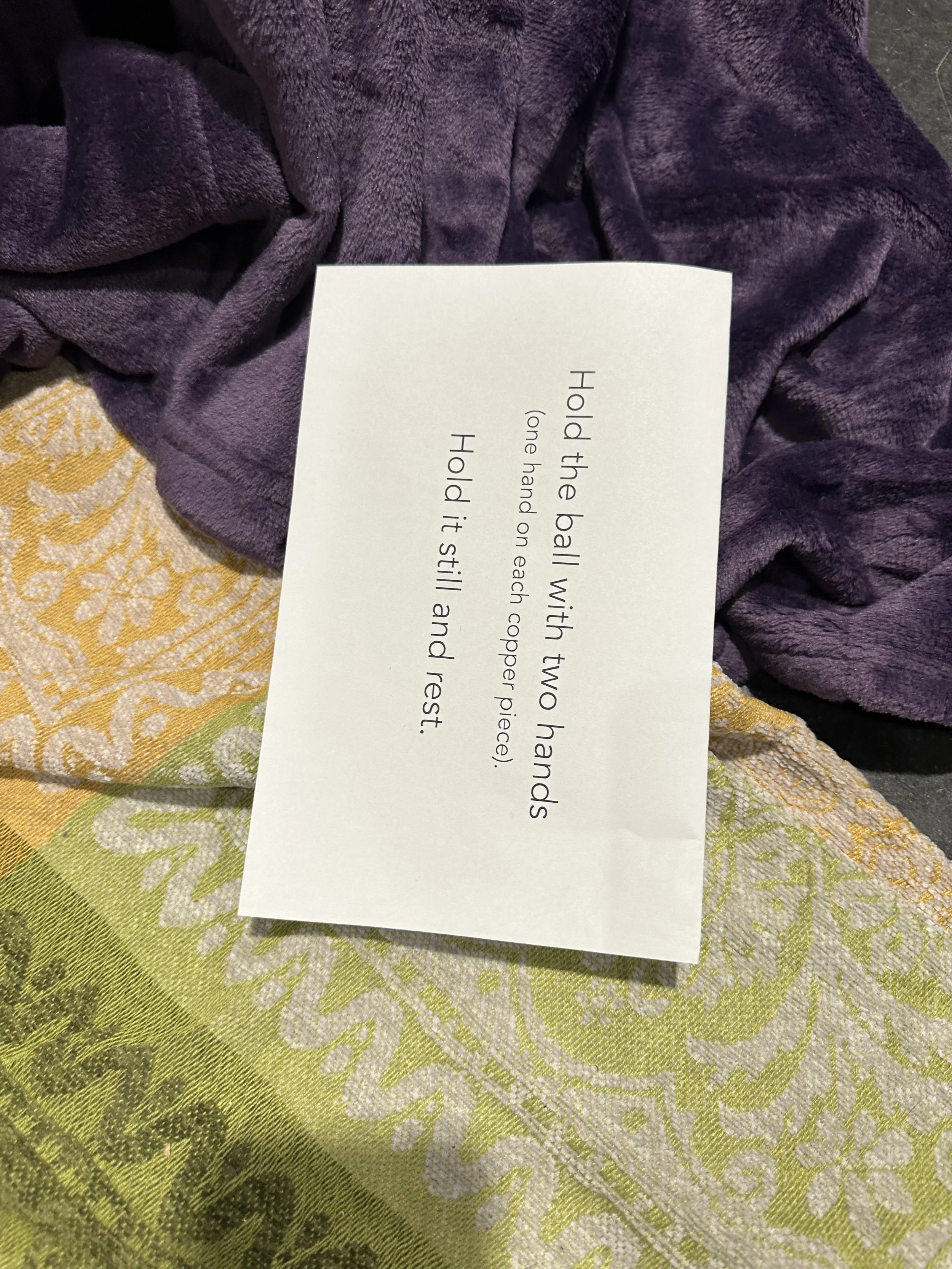
The instructions seemed to work well for those who read them, but not everyone who visited the installation read them. A clearer transition into the installation might be possible with better instructions.

I hid the circuits under one edge of a blanket, and I placed one of the instructional signs on top of it, hoping people wouldn't step on that area. Someone did anyway, and there was a moment where I had to reconnect a component of the circuit that had been squished and restart my patch.

About 8-12 people spent time in the installation.

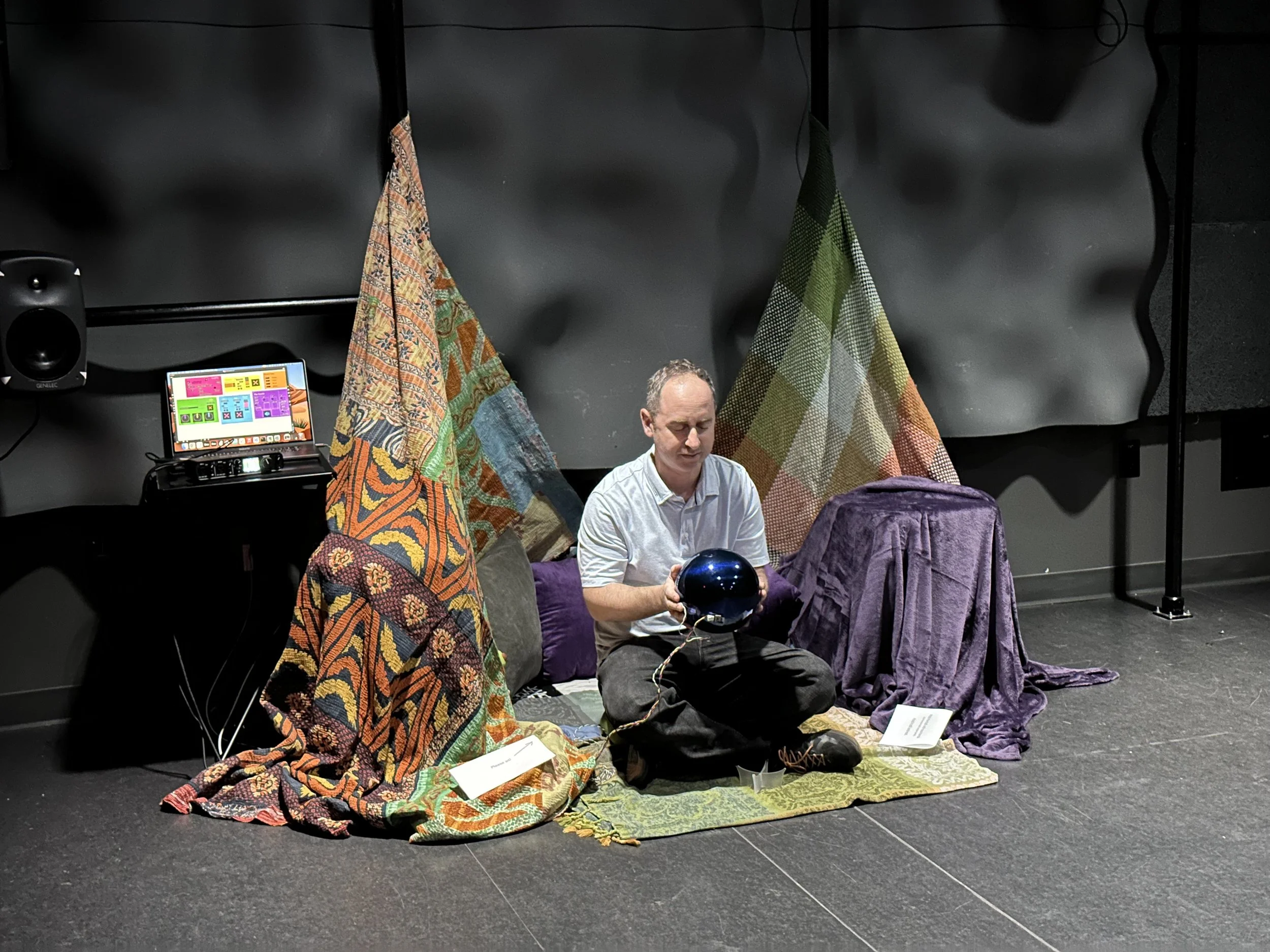
I didn't anticipate that non-participants would stand around and watch whoever was inside the installation. I wish I'd given more thought to that, since it makes the experience less private and more performative.

One person suggested it would make a nice meditation corner in my house. I'd like to do that. One person requested more volume and more physical vibration from the low-frequency sounds.


Overall, I'm happy with the meditative experience and the sound worlds, and I would like to create another iteration that's more private and incorporates the blanket(s) more directly in the interactions. Maybe snuggling down inside the blanket and lying still results in a sound world, instead of sitting upright on a cushion.
Inspirations




